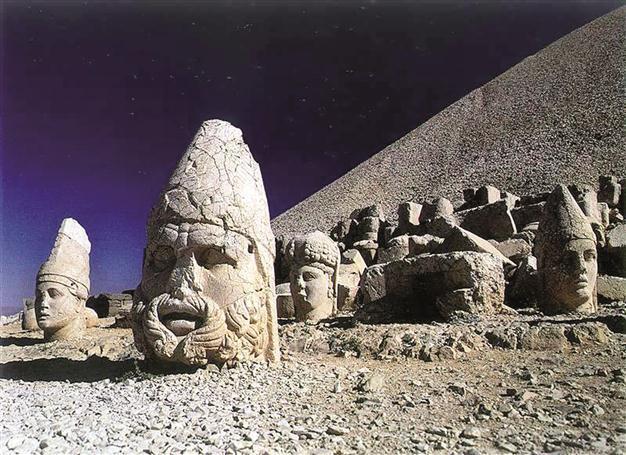Turkish mayor demands halt to Nemrut planning
ADIYAMAN-Anatolia News Agency

Adıyaman municipality is struggling to keep up with Malatya in order to increase its tourist traffic. Hürriyet photo
Controversy is increasing over the future of Mount Nemrut in the Turkish provinces of Adıyaman and Malatya. Malatya wants to use the historic mountain as part of its own tourism plan, but Malatya and Adıyaman currently “share” the site as part of UNESCO’s World Heritage program. Adıyaman mayor Necip Büyükaslan has taken the controversial attempt to the court.According to a written statement from Büyükaslan, the district’s Cultural Sites Protection Association determined the current border of Nemrut Mount. “The new border of Mount Nemrut may result in the removal of the mountain from the UNESCO heritage list […] That’s why we demand an end to this plan,” he said.
The fight over the mountain has arisen over transportation facilities. Malatya municipality wanted to ease tourists’ access to the site, so it built new roads and hotels. The road from Malatya to Mount Nemrut was reconstructed with new facilities. Speaking to Cihan News Agency, Malatya Gov. Ulvi Saran said it was a must for the municipality to build new roads to make transportation easier to Nemrut.
But Adıyaman municipality also lays claim to Mount Nemrut and is struggling to keep up with Malatya in order to increase its tourist traffic.
Nemrut is a 2,134-meter high mountain in southeastern Turkey, notable for its unique summit, where a number of large statues were created, around what is assumed to be a royal tomb from the first century B.C.
The mountain lies 40 km north of Kahta, near Adıyaman. In 62 B.C., King Antiochus I Theos of Commagene built a tomb-sanctuary on the mountaintop, flanked by huge statues of himself, two lions, two eagles and various Greek, Armenian and Iranian gods, such as Hercules-Vahagn, Zeus-Aramazd or Oromasdes (associated with the Irenic god Ahura Mazda), Tyche and Apollo-Mithras. These statues were once seated, with the names of each god inscribed on them. At some stage, the heads of the statues were removed from their bodies, and they are now scattered throughout the site.
















